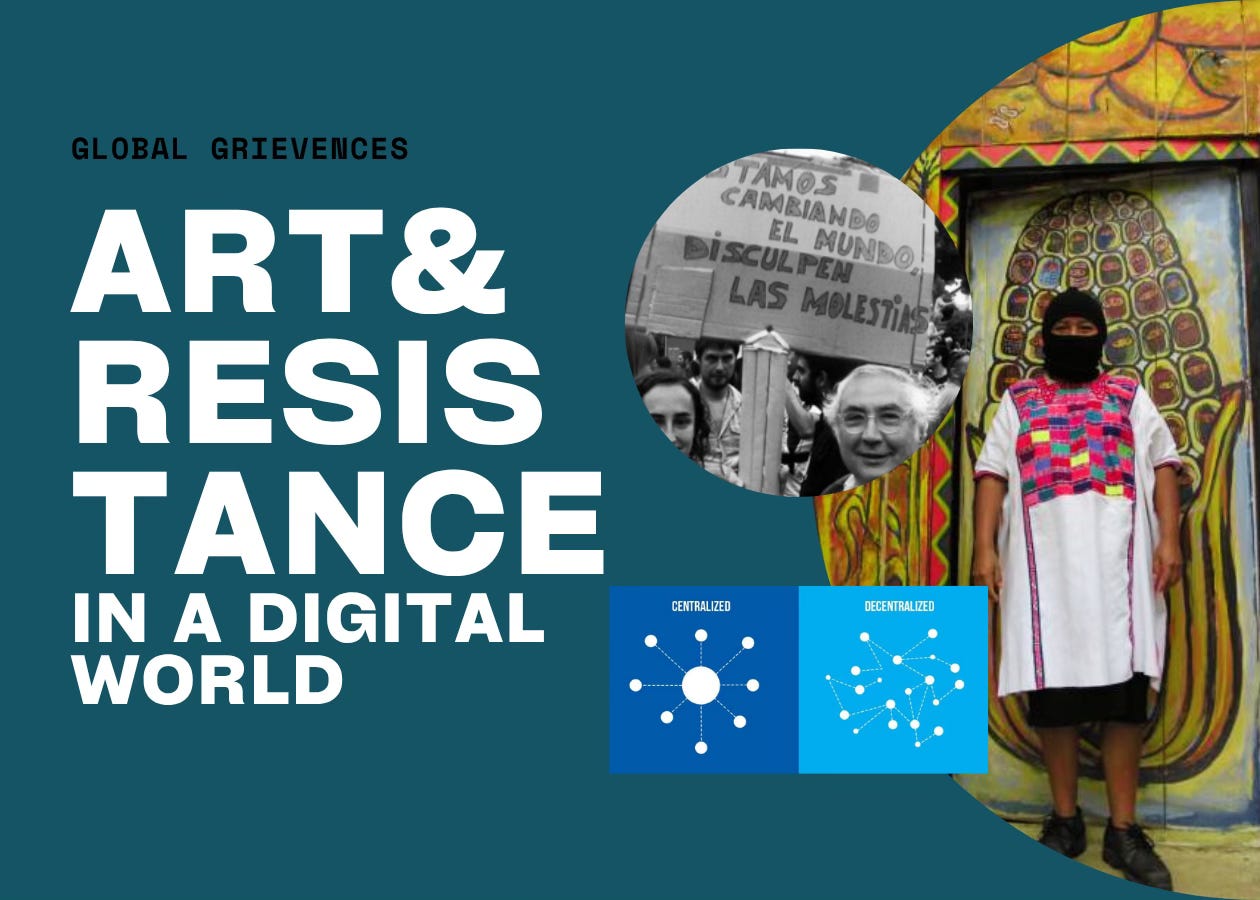The Global Flow of Visual Culture: Social Movements, Indigenous Media, and Visual Activism (An adapted presentation)
The complexity of the global movement of people and images has created challenging and changing dynamics – be that through immigration, refugees fleeing, and diasporic communities.
This renaissance of culture through nation-state breakdown, hybridization, and the 21st century concern of security that is met with technological surveillance AND a high volume rapid media exchange – create conditions for social movements and visual activism to flourish.
Manuel Castelle, a Spanish Sociologist – disclaimer I am a fan, I have his book, Rupture, sitting on my nightstand, describes globalization and the decentralization of media as the Rhizomatic Revolution. This concept looks at the communication network as something that can move freely and interconnects, rather than historical understandings of top-down and hierarchical media dissemination.
Castelle shares that social movements have always been dependent on specific communication methods such as rumors, sermons, pamphlets and manifestos, and that the interactive and user-based models of social media empower these strategies and promote participation in ways not seen before.
Now he is not naive to the challenges of such formats, understanding that surveillance still plays a role in dictating visibility, but underscores that the capabilities should not be undermineded and as other scholars and activists in this area have shared – humans will continue to innovate and use creative means to resist subjugation. Highlighting that mobilization and physical gathering is the ultimate goal of social movements no matter the way in which they become organized.
Social media and the digital world more broadly allow ideas, images, and strategies to circulate virally. Digital social networks allow individuals to communicate outside of their local communities – to see more of the world than outside their window. Whether for ones own need or in sympathy and moral incongruency of others conditions, the digital space allows for social movement organization. And has aided in mobilizing otherwise disconnected rebels and activists.
This is not an absolute power system, global public discourse is governed by various states of surveillance and as Ranciere proposed the “distribution of the sensible” as a way to describe how power relations designate which is visible and that which cannot be seen. That can look like moderating content or by condemning or discrediting such actions through legacy media channels.
These actions to silence certain voices can be beneficial in maintaining safety in some ways, we live in an era of ‘misinformation’, but in deciding right or wrong, governments and platforms act as monolithic sources of information – where dictating ones visibility becomes concerning.
Arab Springs and Occupy Wall Street amongst other notable organization efforts utilized social media in crafting plans for visibility - more current examples of the power of globalization and digital communications for social causes include the #metoo movement, and even the case of identifying and charging Luka Magnotta in the murder of Jun Lin - humanitarian causes that without these established and global communities may have never gotten off the ground.
While not perfect, and efforts to reduce specific social movement’s organization continues – the case of the Zapatista National Liberation Army shows that resistance is possible through digital and analogue means.
Disseminating information from rebels to global supporters, the Zapatista utilize high and low tech means to continue their fight for indigenous rights and against globalization. We see this today in a local context – the protection of fairy creek, a cause that requires on-the-ground visibility, yet is largely organized through digital means and protests are broadcast on social media for attention, visibility, and to garner more support.
This use of digital activism, and broadcast of rebellion is also used by the Zapatista to break from the assumptions that indigenous people are 2D images found in museums, and only historical beings – Asserting through practice the very real presence and living force that indigenous populations continue to be.
It is also important to note that this work is not free from criticism and ramifications – the right to make art as political expression, economic autonomy or survival in a globalized world is not guaranteed. With challenges, there is positive found in digital media’s creation of new cultural genres and mediums.
Exposure and visibility can help to legitimize the embrace of non-dominant cultures – where rebellion is shunned, curiosity flourishes.
Today, I think of TikTok and the success of first nations and Inuit influencers who were able to showcase their culture in genuine ways. Virality that has allowed them to step into mainstream media and thinking forward, this visibility and connection is a necessary step towards collective action. The burden to erase prescribed stereotypes should not fall onto indigenous creators, but digital means offer a different avenue to social movement success.
You made it to the end. Want more straight to your inbox?








